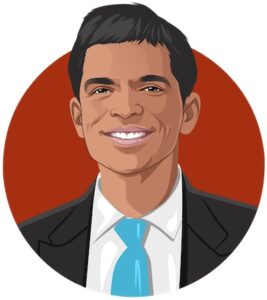The individual investor
Børsgade is intended for individual investors who have a time horizon of at least 5 years and who want a portfolio that can grow year by year. The basic ihe investment philosophy on this site is really quite simple: Maximise the total return while minimising the risk of permanent loss of capital (ie. your savings).
Every investor needs to find their own investment style that suits their personality and temperament.
However, I strongly believe that if you follow the philosophy and principles of Borsgade, you will already be many steps ahead of the majority of other investors. Both private and professional, and have laid the foundation for high long-term returns.
If you are a new investor, I recommend you start by reading here.

Minimize your risk of loss
Risk basically means that there are more things that can happen than will happen. To understand your risk, for example when making an investment decision, you need to map out the possible scenarios, assess how likely they are to materialize and how much you would lose (or gain) if you choose to sell afterwards. When you add it up, you always want a situation where you might lose two or three dollars, but with an opportunity to make ten.
When it comes to investing, there is only one definition of risk that should matter to the private investor: the probability of suffering a permanent loss of capital (aka your savings).
Permanent loss means that you have realized the loss and have lost all or part of the amount you invested. This way of viewing risk contrasts with the common definition on Wall Street, where volatility, i.e. fluctuations in market price, is considered risk. But for the long-term investor who has allocated their funds sensibly in relation to their life situation, neither daily, monthly or even yearly fluctuations in the share price should pose a risk. Risk is the scenario where you realize a loss because you have to sell early or the company’s ability to make money declines and doesn’t come back.
And why focus on risk? A little thought experiment can help illustrate: Imagine that on January 1st you bought shares in a popular tech company at a price of 200. Not long after, the company announces that it is experiencing lower than expected growth, resulting in a 50% drop to 100. How much does the stock need to rise to make up for this loss?
Yes, that’s right. The stock has to increase by 100% – just to make up for lost ground. A company doubling its market value often happens over a long period of time, if ever, and we must therefore try to minimize these types of scenarios as much as possible.
The total return
It’s a common mantra among value investors that if you focus hard on not losing money, the gains will come naturally. There are several reasons why this is the case. The strong focus on minimizing our losses means that we only buy companies that are stable and where our assessment of the company’s value is significantly higher than the market price. Also known as our margin of safety. In practice, this means that we have to opt out of many companies. But it also means that we will continuously get a reasonable return on our savings. Over time, compound interest will take care of the rest.
The fact that our goal is to achieve maximum total return means that you can’t just look at the increase in share price. You must also include costs of any kind, the impact of tax on your return, share buybacks of the company, and any dividends you may receive from the company during the ownership period.
The road from here
The hard-working investor who enjoys a good treasure hunt can start by delving into the Principles for The Intelligent Investor. They set the framework for putting the investment philosophy into practice.
Does all this seem like too much work? Fear not – there is actually a simple way to invest that will give you a good return with minimal risk and effort. Read my guide to the Simple path to wealth.




